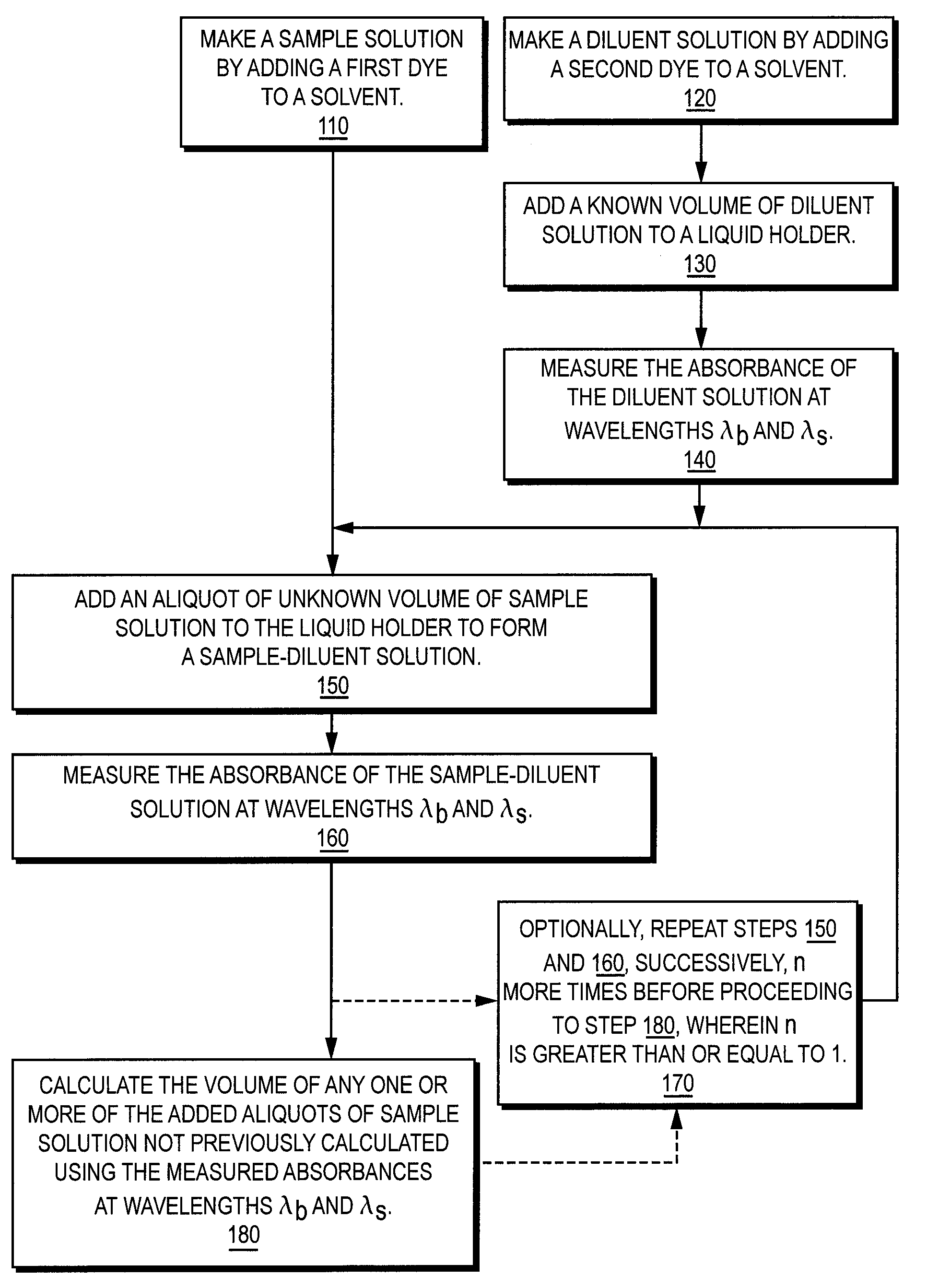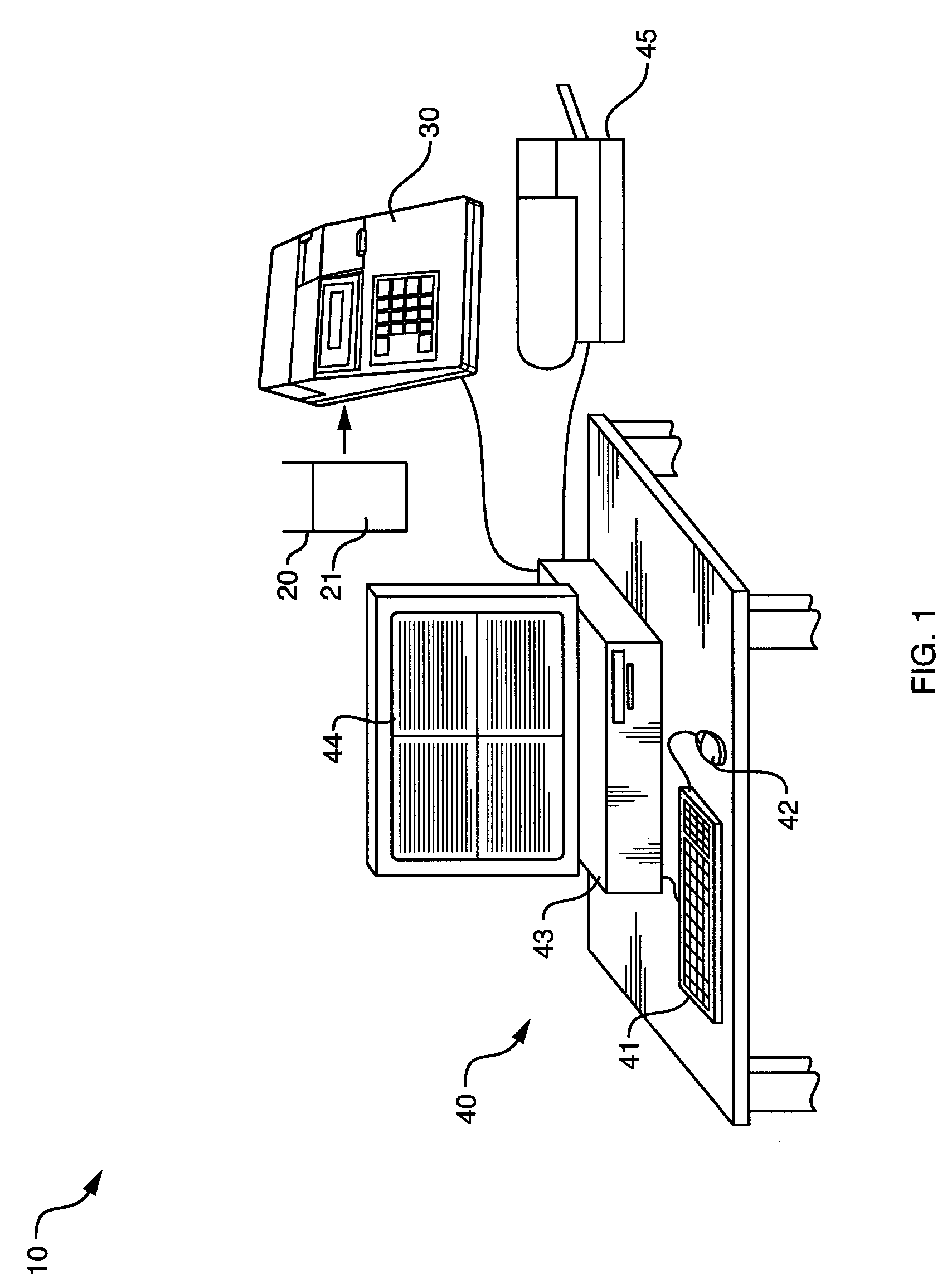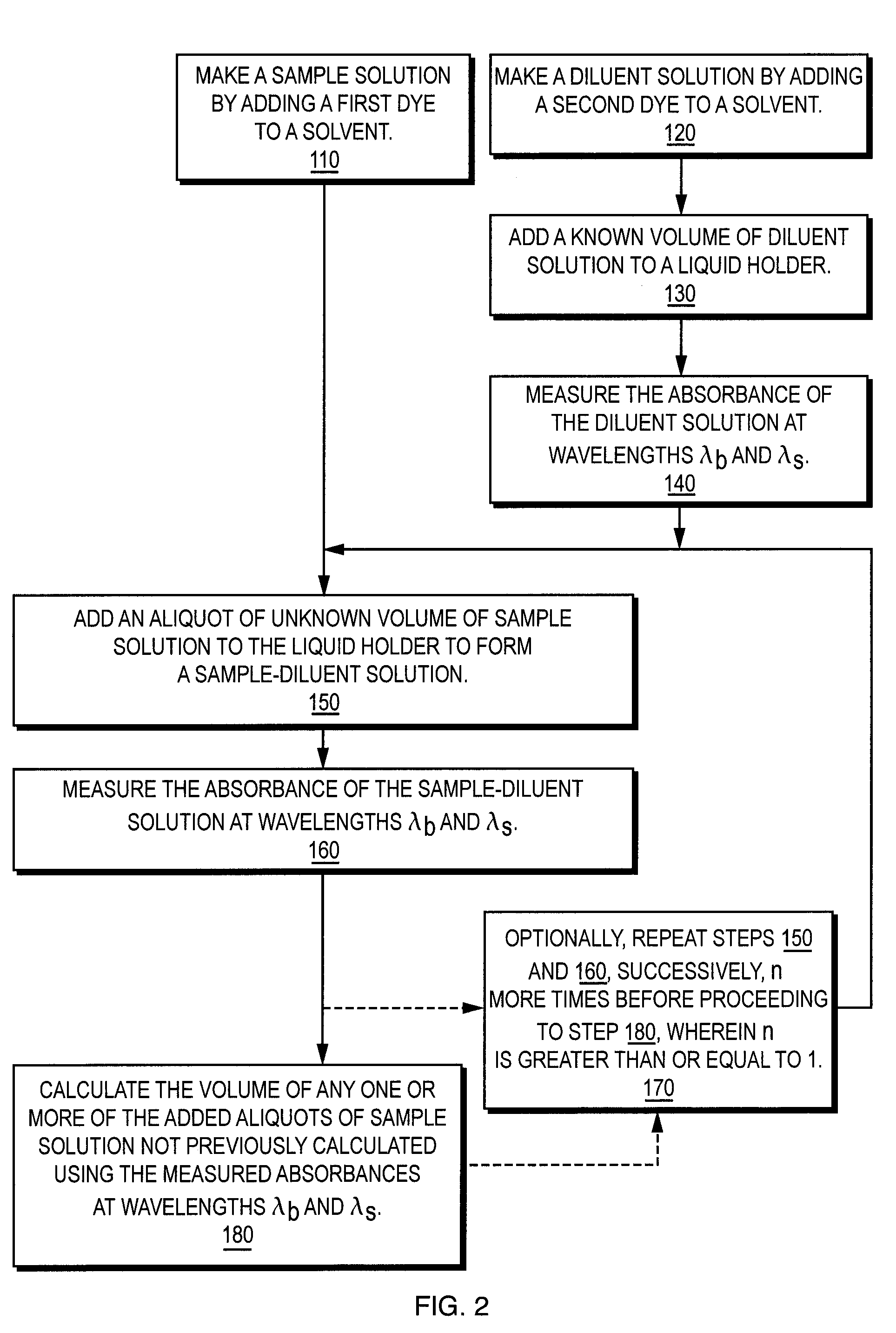Method and apparatus for determining liquid volume
a liquid volume and volume technology, applied in the field of methods, can solve the problems of skewing the protein concentration calculation, small errors, and inability to accurately determine and achieve the effect of accurately and accurately determining the volume of an aliquo
- Summary
- Abstract
- Description
- Claims
- Application Information
AI Technical Summary
Benefits of technology
Problems solved by technology
Method used
Image
Examples
Embodiment Construction
[0038]The present invention is a method for precise and accurate determination of the volume of an aliquot of liquid. The method of the present invention is referred to herein as the “hybrid absorbance volume calculation method”100. The present invention is also a related apparatus and optional kit to aid in performing a portion or all steps of the method described.
[0039]In an embodiment of the apparatus, which is shown in FIG. 1, a volume determining apparatus 10 includes as primary components a liquid holder 20, a spectrophotometer 30, and a computing system 40 capable of carrying out calculations defined through computer-executable software.
[0040]In an embodiment of the apparatus, the liquid holder 20 is used to retain the liquid 21 to be analyzed. The liquid holder 20 can be placed into the spectrophotometer 30. The spectrophotometer 30 is capable of being instructed to initiate absorbance measurements on the liquid 21 in the liquid holder 20. These instructions may be carried o...
PUM
| Property | Measurement | Unit |
|---|---|---|
| volume | aaaaa | aaaaa |
| volume | aaaaa | aaaaa |
| volume | aaaaa | aaaaa |
Abstract
Description
Claims
Application Information
 Login to View More
Login to View More - R&D
- Intellectual Property
- Life Sciences
- Materials
- Tech Scout
- Unparalleled Data Quality
- Higher Quality Content
- 60% Fewer Hallucinations
Browse by: Latest US Patents, China's latest patents, Technical Efficacy Thesaurus, Application Domain, Technology Topic, Popular Technical Reports.
© 2025 PatSnap. All rights reserved.Legal|Privacy policy|Modern Slavery Act Transparency Statement|Sitemap|About US| Contact US: help@patsnap.com



